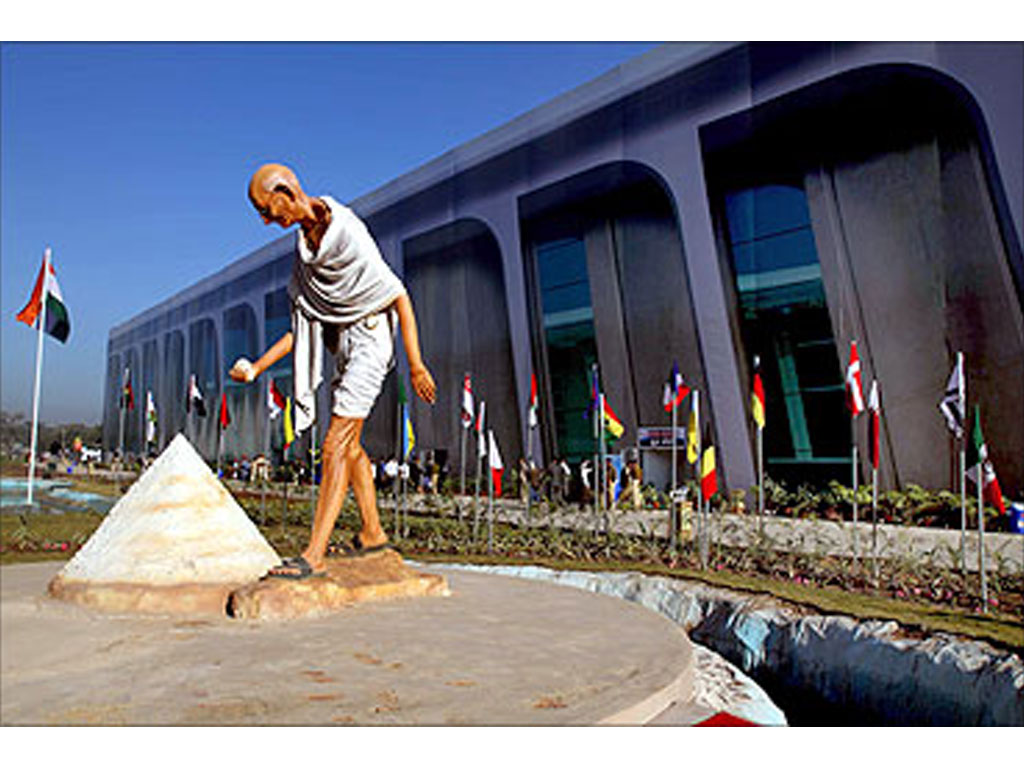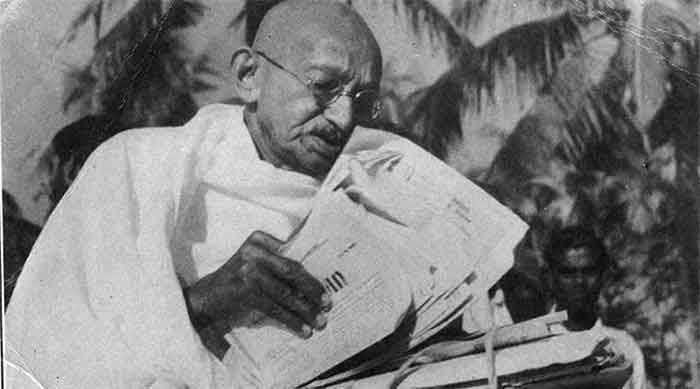
Gandhinagar, 13 November, 2016: This turned out to be quite a travesty of Mahatma Gandhi and his teachings in the land of his birth. This was in Gandhinagar, the capital of Gujarat . The occasion was the inauguration of an official government of India conference on urban transport on November 8 but the inauguration proved to be a well-planned political event where Narendra Modi, the Prime Minister, was repeatedly applauded.
Half of the huge auditorium was filled with women, many of them carrying babies in arms. They had been brought in by special buses clearly to cheer Mr Modi. This was an international conference and I could see several foreign delegates struggling to find a seat as most seats were taken by outsiders.
Mr Venkiah Naidu, union minister for urban development, spent quite some time in his inaugural address to eulogise Mr Modi. He lashed out at Mr Modi’s critics and said some of them even called him impotent. One wonders how these people came to this conclusion, he said with sarcasm and this led to wild cheering from the audience who seemed to have been well tutored.
Mr Modi’s presence was visible in posters and a film all the time. His photograph was prominent in the banner even in smaller, technical sessions later in the conference.
Mr Naidu claimed that there was total freedom of expression in the country . He warned amidst applause that people should not criticize the armed forces or the nation. While invoking the names of Ambani and Adani, he said there was nothing wrong with being pro-business. He also ridiculed a socialist mindset.
The four-day conference was held in Mahatma Mandir which means a temple to Mahatma Gandhi. Here lies the mockery. This is a gigantic complex of a convention centre, an exhibition hall and a memorial to the Mahatma built like a big conical heap of salt to symbolize the salt satyagraha of Dandi in Gujarat.
The official claim is that this is built in the spirit of the Mahatma’s teachings. This is so ridiculous. This gigantism, this huge edifice of steel, cement, concrete and glass is totally un-Gandhian and utterly unfriendly to the environment and a huge consumer of energy. It cannot function without air conditioning.
It is dull and unaesthetic. This is clearly an engineering exercise, without any respect to architecture. This is utterly ironic considering that Ahmedabad has such a rich tradition of modern architecture with few rivals in the country. Its architects include Corbusier, Louis Kahn, B.V. Doshi and Charles Correa among others. Correa’s Gandhi museum is so evocative of Gandhian values and so elegant. In the soulless , very industrial convention centre in Mahatma Mandir the image of Gandhiji spinning on the charkha looks pathetic and incongruous. That is what Gandhiji is reduced to. And in the audio visual show on the Mahatma in Dandi Kutir in the complex, the visitors are hustled out without showing Gandhiji’s assassination.
Strangely, no architect was invited for the project despite the rich tradition of architecture of Gujarat, both old and modern and it boasts of CEPT university , one of the few institutions specializing in urban planning. Instead, the work was entrusted to two engineering and construction firms. L & T and Shapoorji Pallonji.
Mahatma Mandir is also a misnomer. Gandhi is not someone who is to be deified and made into an idol. He needs to followed but since this is so difficult and inconvenient , the Congress culture too has turned him into a mere symbol.
It is perhaps symbolic that Mahatma Gandhi’s grandson Kanubhai, 87, passed away during the conference. The little boy one sees in photographs holding Mahatma Gandhi’s hand during the Dandi yatra is Kanu. The 390 km march from Sabarmati Ashram to Dandi in 1930 is the best symbol of the power of walking as a form of democratic assertion.
However, Gujarat is now the very negation of all that Mahatma Gandhi stood for, especially his championing of walking as an important mode of mobility and democratic protest. It is one of the most automobilised states and chief minister Vijay Rupani proudly mentioned in his speech at the inauguration about the large number of automobiles in the state. It also gave huge concessions for the Nano car which proved to be such a resounding disaster. The Gandhinagar – Ahmedabad highway sees dangerous speeds and it is very hazardous to cross it.
Gandhinagar was well planned by H.K.Mewada and Prakash Apte in the sixties. But now it is reduced an undemocratic form when it comes to mobility. The Mahatma Mandir is miles away from public transport, heavily dependent on the motor car. There is little bus system within the capital city and there is poor connectivity by bus with Ahmedabad which is some 25 km away.
Public transport is poor. One notices this as soon as one lands at Ahmedabad station by train. The auto rickshaws do not run according to meter and travelling can be hazardous as the vehicles are overloaded openly. At least two men sit on either side of the driver and behind at least four people sit in place of three. I saw this on way to the lovely historic site of Sarfez Roza with its mosque, dargah and lake and a pleasant ambience. Clearly, there is no law and order. There is also a heavy presence of the military in a huge cantonment in the heart of the city. It is an old cantonment but it looks eerie in the context of the history of communalization and violence in the city.
To its credit the state BJP government is a pioneer in the country in starting the BRT bus rapid transit BRT system which gives priority to bus transport through a special lane.
It is true Gandhinagar is very green with a lot of trees and open spaces. But the commercialization of land at the cost of basic amenities is a matter of concern and Prakash Apte, the surviving planner of the new city, has rightly written about this.
It is strange that the urban development department has been holding its annua urban mobility l conferences in areas so difficult to access for common people by public transport or on foot. This is for the first time the conference was held outside Delhi. In the last five years it was held in Manekshaw Centre in the very restricted military area on the outskirts of the capital on the Gurgaon road. It is extremely hazardous to cross the road by foot to the venue. Next year, the conference is to be held in Hyderabad where there will be hopefully less scope for an elitist approach.
(Mr Vidyadhar Date is a senior journalist and author of the book Transport in the era of climate change).













































